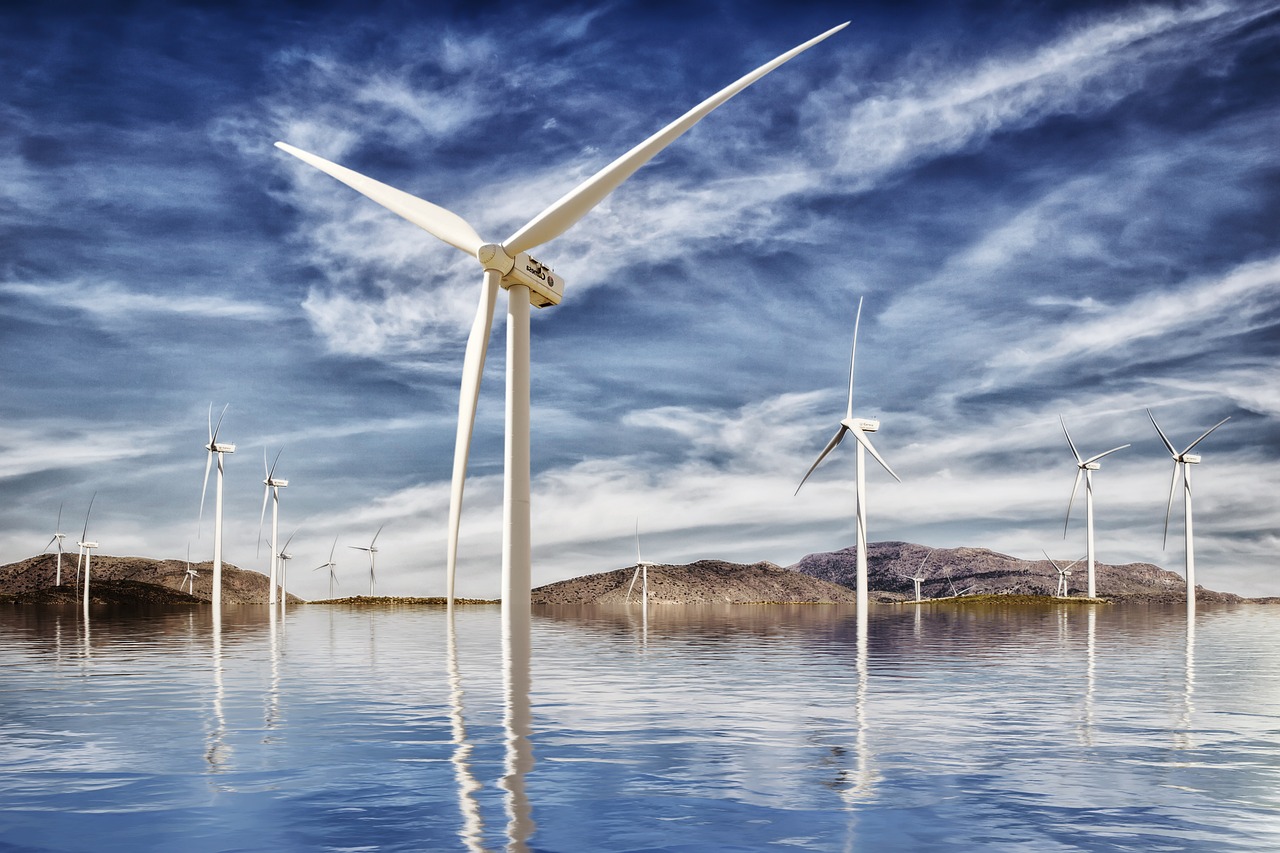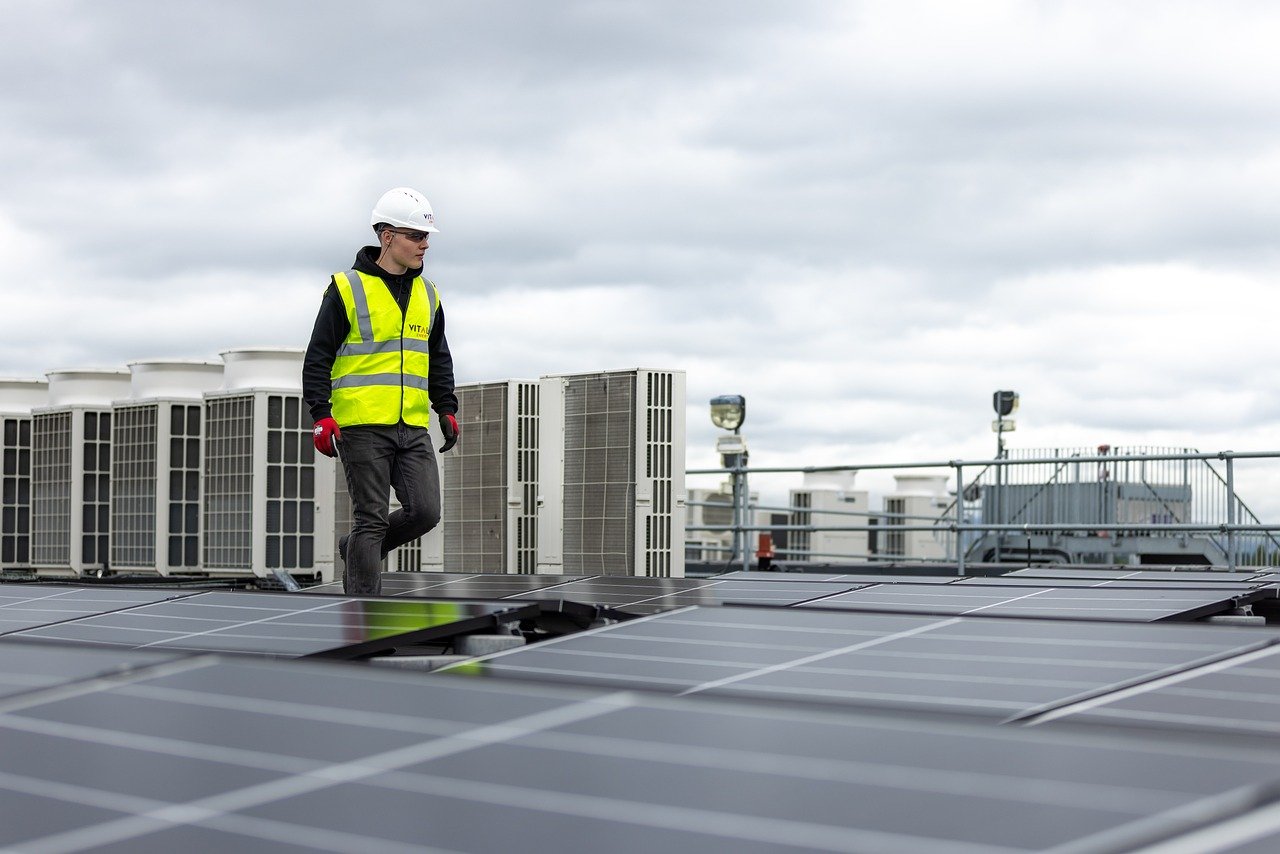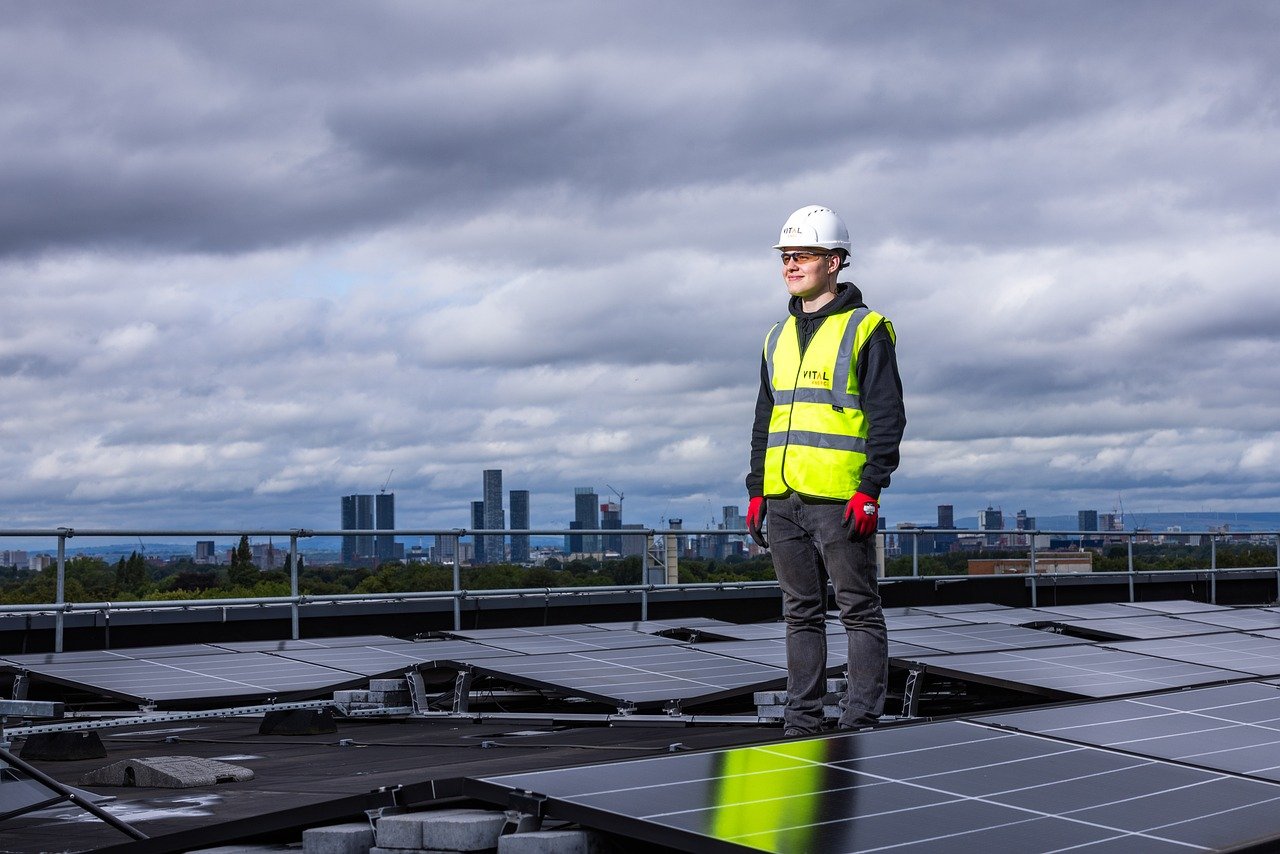Green Energy Solutions - An Answer to Rising Fossil Fuel Prices
As the world grapples with the escalating prices of fossil fuels, the quest for alternative energy solutions has never been more critical. Green energy solutions have emerged as a beacon of hope, offering sustainable and environmentally friendly options that not only mitigate the impact of rising energy costs but also pave the way for a healthier planet. In this article, we will delve into various green energy options, their benefits, the challenges of transitioning to them, and the future they promise.
Green energy refers to renewable energy sources that are environmentally friendly and sustainable. These sources include solar, wind, hydroelectric, geothermal, and biomass energy. The significance of green energy in combating climate change cannot be overstated. As fossil fuel reserves dwindle and their prices soar, renewable energy sources provide a viable alternative that helps reduce our carbon footprint while promoting energy independence. By harnessing the power of nature, we can create a more sustainable future for generations to come.
Adopting green energy solutions offers numerous advantages. Here are some key benefits:
- Reduced Carbon Emissions: Transitioning to renewable energy sources significantly lowers greenhouse gas emissions.
- Energy Independence: By investing in local renewable energy, countries can reduce their reliance on imported fossil fuels.
- Economic Opportunities: The green energy sector is rapidly growing, creating jobs and stimulating economic growth.
The transition to green energy significantly lowers greenhouse gas emissions, helping to combat global warming. For instance, solar panels and wind turbines produce energy without emitting harmful pollutants. This shift can lead to a substantial decrease in the carbon footprint of energy production, contributing to a healthier planet.
Switching to renewable energy sources can drastically improve air quality by reducing pollutants. The burning of fossil fuels releases harmful substances into the atmosphere, leading to respiratory issues and other health problems. By utilizing green energy, we can not only enhance air quality but also promote public health and well-being.
Green energy promotes the sustainable use of natural resources, ensuring their availability for future generations. Unlike fossil fuels, which are finite and depleting, renewable sources like solar and wind energy are abundant and can be harnessed continuously. This conservation of resources is crucial for maintaining ecological balance.
The green energy sector is rapidly growing, creating jobs and stimulating economic growth. According to recent studies, the renewable energy industry has outpaced traditional energy sectors in job creation. This growth not only provides employment opportunities but also fosters innovation in technology and infrastructure.
Despite its benefits, transitioning to green energy presents several challenges, including technological, financial, and regulatory hurdles. Understanding these obstacles is crucial for developing effective strategies to overcome them.
Advancements in technology are crucial for the efficiency of green energy solutions. While renewable energy technologies have made significant strides, challenges remain in energy storage, grid integration, and overall efficiency. Addressing these technological barriers is essential for better implementation and widespread adoption.
The initial investment for green energy projects can be substantial. However, it's important to view this as a long-term investment. The financial implications can be daunting, but various funding sources and incentives are available to support renewable energy initiatives. Understanding these options can help alleviate some of the financial burdens associated with transitioning to green energy.
Government policies play a vital role in the adoption of green energy. Regulatory frameworks can either support or hinder the growth of renewable energy solutions. It's essential for policymakers to create an environment that encourages investment in green technologies.
Various incentives encourage the use of green energy, including tax credits and subsidies. These incentives can significantly reduce the costs associated with renewable energy projects, making them more attractive to investors and consumers alike.
Global collaboration is essential for addressing climate change and promoting green energy. International agreements and partnerships facilitate the transition to renewable energy sources, ensuring that countries can share knowledge, resources, and technologies to achieve common goals.
The future of green energy looks promising as technology advances and awareness grows. Innovations in energy storage, smart grids, and sustainable materials are set to revolutionize the renewable energy landscape. As more individuals and businesses recognize the importance of sustainable practices, the shift towards green energy will only accelerate.
Q: What are the main sources of green energy?
A: The main sources of green energy include solar, wind, hydroelectric, geothermal, and biomass energy.
Q: How does green energy help reduce carbon emissions?
A: Green energy sources produce little to no greenhouse gas emissions compared to fossil fuels, significantly lowering the overall carbon footprint.
Q: Are there financial incentives for switching to green energy?
A: Yes, many governments offer tax credits, subsidies, and grants to encourage the adoption of renewable energy technologies.
Q: What challenges does green energy face?
A: Key challenges include technological barriers, high initial investment costs, and regulatory hurdles.

Understanding Green Energy
Green energy is not just a buzzword; it’s a crucial part of our fight against climate change and an essential step towards a sustainable future. But what exactly does it mean? In simple terms, green energy refers to energy that is generated from renewable resources that are naturally replenished. This includes sources like solar, wind, hydro, and geothermal energy. Unlike fossil fuels, which are finite and release harmful emissions when burned, green energy sources are much more environmentally friendly and sustainable.
As we face the undeniable reality of rising fossil fuel prices, understanding green energy becomes even more critical. These renewable sources not only help reduce our carbon footprint but also offer a pathway to energy independence. Imagine a world where we rely on the sun and wind instead of oil and coal! This shift is not just a dream; it's a necessity for a healthier planet.
Moreover, the significance of green energy extends beyond just environmental benefits. It represents a shift in how we produce and consume energy. With the right technologies and policies in place, we can harness these renewable resources to create a more resilient energy system. This is especially important as we grapple with the uncertainties of fossil fuel markets and their volatile prices.
To further illustrate the importance of green energy, let’s look at some of the key characteristics that define it:
- Renewability: Green energy sources are naturally replenished, ensuring a continuous supply.
- Low Environmental Impact: These sources produce little to no greenhouse gas emissions, helping to mitigate climate change.
- Sustainability: Green energy promotes the responsible use of natural resources, ensuring they are available for future generations.
In conclusion, understanding green energy is essential for anyone who wants to make informed decisions about energy consumption and environmental responsibility. As we continue to explore various green energy solutions, we’ll discover that the benefits far outweigh the challenges. It’s time to embrace this transition and pave the way for a sustainable future!

Benefits of Green Energy
Adopting green energy solutions offers a plethora of advantages that not only benefit the environment but also enhance our economic landscape. As fossil fuel prices continue to rise, the shift towards renewable energy sources becomes not just a necessity, but a smart choice. Imagine a world where our energy comes from the sun, wind, and water—clean, sustainable, and abundant! This transformation is not just a dream; it’s happening right now, and the benefits are significant.
One of the most compelling reasons to embrace green energy is the potential for reduced carbon emissions. By utilizing renewable sources, we can drastically lower the amount of greenhouse gases released into the atmosphere. For instance, solar and wind power generate electricity without emitting carbon dioxide, a leading contributor to climate change. According to recent studies, transitioning to green energy could reduce global carbon emissions by up to 70% by 2050. Isn’t that a staggering figure?
Moreover, green energy fosters energy independence. Countries that invest in renewable energy sources reduce their reliance on imported fossil fuels, which can be subject to volatile price swings and geopolitical tensions. By harnessing local energy resources, nations can stabilize their energy prices and enhance their security. It’s like having your own garden where you grow your food instead of depending on the grocery store—much less stressful!
Let’s not forget the economic opportunities that green energy brings. The renewable energy sector is booming, creating jobs in various fields such as manufacturing, installation, and maintenance. In fact, according to the International Renewable Energy Agency (IRENA), the renewable energy sector employed over 11 million people globally in 2018, and this number is expected to grow. These jobs are not just numbers; they represent families being supported and communities being revitalized.
Additionally, green energy has a positive impact on public health. By reducing air pollution, we can decrease the incidence of respiratory diseases, heart conditions, and other health issues linked to fossil fuel combustion. A study by the American Lung Association revealed that transitioning to renewable energy could save thousands of lives each year. Imagine breathing cleaner air and enjoying a healthier lifestyle—sounds appealing, right?
In terms of resource conservation, green energy encourages the sustainable use of our planet’s resources. Renewable sources like solar, wind, and hydroelectric power are virtually inexhaustible. This means we can utilize them without depleting our natural reserves, ensuring that future generations have access to the energy they need. It’s akin to using a savings account wisely instead of spending it all at once; you’re securing your future.
To summarize, the benefits of green energy are multifaceted, encompassing environmental, economic, and health-related advantages. The transition to renewable energy sources is not merely a trend; it’s a fundamental shift towards a more sustainable and prosperous future. As we embrace these solutions, we pave the way for a cleaner, healthier planet for ourselves and generations to come.
- What are the main types of green energy? Green energy primarily comes from sources like solar, wind, hydroelectric, geothermal, and biomass.
- How does green energy contribute to job creation? The green energy sector requires a workforce for manufacturing, installation, maintenance, and research, creating numerous job opportunities.
- Is green energy more expensive than fossil fuels? While the initial investment can be high, the long-term savings from reduced energy bills and health benefits often outweigh the costs.
- Can green energy completely replace fossil fuels? While it may not fully replace fossil fuels in the immediate future, the goal is to significantly reduce dependence on them and transition to a more sustainable energy system.

Environmental Impact
The transition to green energy is not just a trend; it’s a vital necessity for the health of our planet. As we grapple with the consequences of climate change, the environmental impact of our energy choices has never been more critical. By shifting from fossil fuels to renewable sources like solar, wind, and hydro, we can significantly reduce our carbon footprint. Each kilowatt-hour generated from a renewable source is a step away from the greenhouse gases that are wreaking havoc on our atmosphere. Imagine a world where the air is clean, the water is pure, and the natural landscapes are preserved for future generations. This vision can become a reality through the adoption of green energy.
One of the most significant benefits of green energy is its ability to lower greenhouse gas emissions. Traditional energy sources, particularly coal and natural gas, release vast amounts of carbon dioxide and other harmful pollutants into the atmosphere. In contrast, renewable energy sources produce little to no emissions during operation. For instance, the table below illustrates the difference in emissions between fossil fuels and renewable energy sources:
| Energy Source | CO2 Emissions (g/kWh) |
|---|---|
| Coal | 820 |
| Natural Gas | 450 |
| Solar | 40 |
| Wind | 10 |
| Hydropower | 5 |
As you can see, the emissions from renewable sources are drastically lower, showcasing their potential to combat global warming. But the benefits don’t stop there. Switching to renewable energy also leads to an improvement in air quality. Fossil fuel combustion releases a cocktail of pollutants, including sulfur dioxide, nitrogen oxides, and particulate matter, which have detrimental effects on human health. By reducing our reliance on these energy sources, we can improve air quality, leading to fewer respiratory diseases and a healthier population. It’s like trading in a smog-filled city for a breath of fresh mountain air!
Moreover, green energy contributes to the conservation of natural resources. Unlike fossil fuels, which are finite and deplete over time, renewable energy sources harness the power of nature—sunlight, wind, and water—which are abundant and sustainable. This means that as we invest in green technologies, we are not just meeting our current energy needs but also ensuring that future generations will have access to the energy they require. It's a classic case of borrowing from nature without exhausting its resources, akin to taking a sip of water from a never-ending well.
In conclusion, the environmental impact of transitioning to green energy is profound. By reducing greenhouse gas emissions, improving air quality, and conserving natural resources, we are paving the way for a healthier planet. The shift to renewable energy is not merely an option; it is an urgent imperative for the survival of our ecosystem and future generations.

Air Quality Improvement
Green energy refers to renewable energy sources that are environmentally friendly and sustainable. This section provides an overview of what constitutes green energy and its significance in combating climate change.
Adopting green energy solutions offers numerous advantages, including reduced carbon emissions, energy independence, and economic opportunities. This section discusses the key benefits that make green energy a viable alternative.
The transition to green energy significantly lowers greenhouse gas emissions, helping to combat global warming. This subsection explores how different green energy sources contribute to a healthier planet.
Switching to renewable energy sources can drastically improve air quality by reducing pollutants that contribute to respiratory diseases and environmental degradation. Traditional energy sources, such as coal and oil, release a cocktail of harmful substances into the atmosphere, including sulfur dioxide, nitrogen oxides, and particulate matter. These pollutants not only harm our health but also contribute to the phenomenon known as acid rain, which can devastate ecosystems.
On the other hand, green energy sources like solar, wind, and hydroelectric power produce little to no emissions during operation. For instance, a typical coal-fired power plant emits approximately 2,200 pounds of carbon dioxide per megawatt-hour, while solar energy systems emit virtually none. By embracing these clean energy alternatives, we can significantly reduce the number of pollutants in the air, leading to:
- Healthier Communities: Improved air quality lowers the risk of asthma, lung cancer, and other respiratory illnesses, creating a healthier environment for all.
- Enhanced Ecosystems: Cleaner air helps protect wildlife and natural habitats, promoting biodiversity and the overall health of our planet.
- Economic Savings: Better air quality can lead to reduced healthcare costs associated with pollution-related illnesses.
Moreover, studies show that transitioning to green energy can lead to a significant decrease in healthcare costs due to improved air quality. According to a report by the American Lung Association, the U.S. could save over $100 billion annually in health-related costs if we made a substantial shift to renewable energy sources. This is not just an environmental issue; it's a public health imperative.
In conclusion, the shift to renewable energy is not merely a trend; it is a necessary step towards improving air quality and ensuring a sustainable future. By investing in green technologies, we not only combat climate change but also foster healthier communities and ecosystems.
The green energy sector is rapidly growing, creating jobs and stimulating economic growth. This subsection highlights the potential for employment and innovation in renewable energy industries.
Despite its benefits, transitioning to green energy presents several challenges, including technological, financial, and regulatory hurdles. This section outlines the main obstacles to widespread adoption.
Advancements in technology are crucial for the efficiency of green energy solutions. This subsection discusses the current technological challenges that need to be addressed for better implementation.
The initial investment for green energy projects can be substantial. This part examines the financial implications and potential funding sources for renewable energy initiatives.
Government policies play a vital role in the adoption of green energy. This section explores the regulatory frameworks that support or hinder the growth of renewable energy solutions.
Various incentives encourage the use of green energy, including tax credits and subsidies. This subsection discusses how these incentives can promote investment in renewable technologies.
Global collaboration is essential for addressing climate change and promoting green energy. This part examines international agreements and partnerships that facilitate the transition to renewable energy sources.
The future of green energy looks promising as technology advances and awareness grows. This section speculates on upcoming trends and innovations that could shape the renewable energy landscape.
- What is green energy?
Green energy refers to renewable energy sources that are environmentally friendly and sustainable, such as solar, wind, and hydroelectric power.
- How does green energy improve air quality?
Green energy sources produce little to no emissions, significantly reducing pollutants that contribute to poor air quality and respiratory diseases.
- What are the economic benefits of green energy?
The green energy sector creates jobs, stimulates economic growth, and reduces healthcare costs associated with pollution-related illnesses.
- What challenges does green energy face?
Challenges include technological barriers, financial considerations, and regulatory hurdles that can hinder widespread adoption.

Conservation of Natural Resources
When we think about green energy, we often focus on its immediate benefits, such as reduced emissions and energy independence. However, one of the most profound impacts of adopting renewable energy sources is the . By shifting our dependence away from fossil fuels, we are not just investing in cleaner energy; we are also preserving vital resources that are essential for the sustainability of our planet.
The extraction and consumption of fossil fuels have led to the depletion of natural resources at an alarming rate. Oil, coal, and natural gas are finite resources, and their extraction often results in significant environmental degradation. In contrast, green energy sources like solar, wind, and hydroelectric power rely on renewable inputs that are replenished naturally. For instance, sunlight and wind are abundant and will not run out, making them sustainable options for energy production.
Furthermore, transitioning to green energy encourages the responsible use of our planet's resources. Renewable energy technologies often require fewer raw materials over their lifecycle compared to traditional fossil fuel systems. For example, the production of solar panels and wind turbines has become increasingly efficient, meaning that we can generate more energy with less material input. This shift not only conserves resources but also reduces waste and pollution associated with the extraction and processing of fossil fuels.
Moreover, the adoption of green energy promotes biodiversity conservation. By reducing our reliance on fossil fuels, we lessen the impact on ecosystems that are often disrupted by mining and drilling activities. The preservation of natural habitats is crucial for maintaining biodiversity, which in turn supports the health of our planet. Healthy ecosystems provide essential services such as clean air, water filtration, and soil fertility, all of which are critical for human survival.
To illustrate the benefits of conservation through green energy, consider the following table that compares the resource consumption of fossil fuels versus renewable energy sources:
| Energy Source | Resource Consumption | Environmental Impact |
|---|---|---|
| Fossil Fuels | High (depletes finite resources) | High pollution, habitat destruction |
| Solar Energy | Low (uses sunlight) | Minimal pollution, land use considerations |
| Wind Energy | Low (uses wind) | Minimal pollution, impacts on bird migration |
| Hydroelectric Energy | Moderate (uses water flow) | Potential disruption of aquatic ecosystems |
In conclusion, the conservation of natural resources is a compelling reason to embrace green energy solutions. By prioritizing renewable energy, we not only secure a cleaner and more sustainable future but also protect the invaluable resources that our planet offers. It’s time to recognize that every kilowatt of green energy generated is a step toward preserving our natural heritage for generations to come.
- What are the main benefits of green energy? Green energy reduces carbon emissions, promotes energy independence, and conserves natural resources.
- How does green energy help in conserving natural resources? By relying on renewable sources, we reduce the depletion of finite resources like fossil fuels.
- What are some examples of green energy sources? Solar, wind, hydroelectric, and geothermal energy are all examples of renewable energy sources.
- Are there any challenges associated with transitioning to green energy? Yes, challenges include technological barriers, financial considerations, and regulatory hurdles.

Economic Opportunities
As the world shifts towards sustainable practices, the green energy sector is emerging as a powerhouse of economic opportunity. The transition from fossil fuels to renewable energy sources not only addresses environmental concerns but also opens up a plethora of job prospects and innovation avenues. Imagine a bustling marketplace where jobs in solar panel manufacturing, wind turbine installation, and bioenergy management are as common as those in traditional industries. This shift is not just a trend; it’s a revolution that promises to reshape our economy.
One of the most remarkable aspects of the green energy movement is its ability to create new jobs. According to recent studies, the renewable energy sector has been growing at an astonishing rate, outpacing traditional industries in job creation. For instance, jobs in the solar industry have increased by over 20% annually in some regions. These roles range from engineering and manufacturing to installation and maintenance, providing opportunities for people with various skill sets. In fact, it’s estimated that transitioning to renewable energy could create millions of jobs globally, which is a significant boost for economies struggling with unemployment.
Moreover, the economic benefits of green energy extend beyond job creation. The sector is a catalyst for innovation. As companies strive to develop more efficient technologies, we see advancements that not only improve energy efficiency but also reduce costs for consumers. For example, the development of energy storage solutions, such as advanced battery technologies, is crucial for harnessing renewable energy effectively. These innovations can lead to lower energy bills and increased energy independence for households and businesses alike.
However, it’s essential to recognize that the transition to green energy also presents challenges. The initial investment required for renewable energy projects can be substantial, often leading to hesitance from investors. Yet, the long-term savings and benefits can far outweigh these initial costs. To illustrate this point, consider the following table, which summarizes the potential savings over time when investing in green energy solutions:
| Energy Source | Initial Investment | Average Annual Savings | Payback Period (Years) |
|---|---|---|---|
| Solar Energy | $15,000 | $1,500 | 10 |
| Wind Energy | $50,000 | $5,000 | 10 |
| Geothermal Energy | $20,000 | $2,000 | 10 |
This table clearly shows that while the upfront costs can be high, the long-term benefits of green energy investments are substantial. Additionally, governments and organizations are increasingly recognizing the importance of supporting this transition through various incentives and funding programs, further enhancing the economic landscape.
In conclusion, the green energy sector is not just about saving the planet; it’s about creating a sustainable economic future. With the potential for job creation, innovation, and long-term savings, it’s clear that embracing green energy solutions is a smart move for individuals, businesses, and governments alike. So, as we move forward, let’s harness the power of green energy and turn challenges into opportunities for a brighter, more sustainable future.
- What are the main types of green energy? The main types include solar, wind, hydroelectric, geothermal, and biomass energy.
- How can green energy create jobs? Green energy creates jobs through manufacturing, installation, maintenance, and research and development in renewable technologies.
- What are the financial incentives for switching to green energy? Many governments offer tax credits, rebates, and grants to encourage the adoption of renewable energy technologies.
- Is green energy more expensive than fossil fuels? While the initial investment can be higher, the long-term savings and environmental benefits often make green energy a more cost-effective solution.

Challenges of Transitioning to Green Energy
Transitioning to green energy is not all sunshine and rainbows; it comes with its own set of challenges that can make the journey feel like climbing a steep mountain. While the benefits are clear, the road to implementing renewable energy solutions is often riddled with obstacles that need to be navigated carefully. One of the most significant hurdles is the technological barrier. Though advancements in technology have made renewable energy sources like solar and wind more efficient, there are still limitations in energy storage and grid integration that need to be overcome. Imagine trying to fill a bucket with holes; without the right technology to store energy, much of it can be lost, especially when production doesn’t match consumption.
Another challenge is the financial considerations. The initial investment for setting up green energy projects can be substantial. For instance, while solar panels may save you money in the long run, the upfront costs can be daunting for both individuals and businesses. This financial barrier can discourage many from making the switch. However, it’s essential to recognize that the costs of renewable technologies have been declining rapidly, making them more accessible than ever. Still, potential investors often look for funding sources and incentives that can alleviate these financial burdens.
Moreover, the regulatory landscape plays a crucial role in the transition to green energy. In many regions, outdated regulations can stifle innovation and slow down the adoption of renewable technologies. Governments must create policies that not only support the growth of green energy but also simplify the process for businesses and individuals looking to make the switch. Without a supportive regulatory framework, the momentum for green energy can easily lose steam.
In summary, while the transition to green energy is essential for a sustainable future, it is not without its challenges. From technological and financial barriers to regulatory hurdles, these obstacles can seem overwhelming. However, with continued innovation, supportive policies, and public awareness, the path to a greener future can become clearer. It’s a collective effort that requires commitment from all sectors of society.
- What are the main challenges in transitioning to green energy? The main challenges include technological barriers, financial considerations, and regulatory hurdles.
- How can technology improve green energy solutions? Advancements in technology can enhance energy efficiency, storage capabilities, and grid integration, making renewable sources more viable.
- What financial support is available for green energy projects? Various incentives, such as tax credits and subsidies, can help reduce the initial investment costs associated with renewable energy projects.
- Why is regulatory support important for green energy? Supportive regulations can facilitate the adoption of renewable technologies and encourage investment, ultimately speeding up the transition to green energy.

Technological Barriers
When we talk about green energy, it’s easy to get swept away by the excitement of its potential. However, lurking beneath the surface are some significant that we need to address. Imagine trying to build a house with a toolbox that only has half the tools you need; that’s somewhat how the renewable energy sector feels right now. The technology for harnessing and storing green energy is still evolving, and while we’ve made leaps and bounds, there are several challenges that remain.
One of the primary hurdles is the efficiency of energy conversion. For instance, solar panels can convert sunlight into electricity, but their efficiency rates hover around 15-20%. This means that a significant portion of sunlight goes to waste. Researchers are working tirelessly to develop next-generation solar technologies that can capture more energy, but until these innovations hit the market, we’re stuck with the limitations of current technology.
Wind energy faces similar challenges. While wind turbines are effective, their intermittent nature means they can’t produce energy all the time. This variability can create instability in energy supply, leading to reliance on fossil fuels as a backup. To mitigate this, advancements in energy storage solutions are crucial. Currently, batteries are the most common way to store energy, but they can be expensive and have environmental impacts of their own. Research into alternative storage methods, such as pumped hydro storage or compressed air systems, is ongoing, but widespread implementation is still a few years away.
Moreover, the integration of renewable energy into existing grid systems presents another challenge. Many grids were designed with fossil fuels in mind and lack the infrastructure to efficiently manage distributed energy sources like solar and wind. Upgrading these systems requires significant investment and innovation. In fact, according to a recent report, the global investment needed to upgrade energy grids to accommodate green technologies could exceed $1 trillion by 2030.
Lastly, there’s the issue of technology accessibility. While developed countries are racing ahead with green energy technologies, many developing nations lack the resources to adopt these innovations. This digital divide not only hampers their progress but also affects global efforts to combat climate change. To bridge this gap, international cooperation and funding are essential, ensuring that all nations can access and implement green technologies.
In summary, while the future of green energy is bright, we must first tackle these head-on. By investing in research, upgrading infrastructure, and ensuring equitable access, we can pave the way for a sustainable energy future that benefits everyone.
- What are the main technological barriers to green energy? The primary barriers include energy conversion efficiency, energy storage solutions, grid integration, and technology accessibility.
- How can we improve the efficiency of renewable energy technologies? Investing in research and development, as well as adopting next-generation technologies, can significantly enhance efficiency.
- Why is energy storage important for renewable energy? Energy storage allows us to store excess energy generated during peak production times for use when production is low, ensuring a stable energy supply.
- What role do governments play in overcoming technological barriers? Governments can provide funding, create favorable policies, and foster international cooperation to help address these challenges.

Financial Considerations
When it comes to transitioning to green energy, one of the most significant hurdles is the financial investment required. Initially, the costs associated with renewable energy projects can seem daunting. For instance, the installation of solar panels or wind turbines often involves substantial upfront expenses. However, it's essential to view these costs through a different lens. Think of it as planting a tree: while it may take time and resources to grow, the long-term benefits—like energy savings and reduced utility bills—are well worth the initial investment.
Moreover, the landscape of is evolving rapidly. Various funding sources are emerging to support green energy initiatives, including government grants, private investments, and crowdfunding platforms. Many governments are now offering attractive incentives to lower the financial barrier for consumers and businesses alike. These incentives can take the form of tax credits, rebates, or even low-interest loans, making it easier to embrace renewable energy solutions.
To give you a clearer picture, here's a table outlining some common financial incentives available for green energy projects:
| Incentive Type | Description |
|---|---|
| Tax Credits | Reductions in tax liability for investments in renewable energy systems. |
| Grants | Direct funding provided by governments or organizations to support renewable energy projects. |
| Subsidies | Financial assistance that lowers the cost of renewable energy technologies. |
| Low-Interest Loans | Loans offered at lower rates to encourage investment in green energy. |
Despite these financial aids, it's important to conduct a thorough cost-benefit analysis before diving into a renewable energy project. This analysis should not only account for the initial investment but also consider the long-term savings and potential increases in property value. Additionally, the return on investment (ROI) for green energy systems can be substantial, often leading to significant savings on energy bills over time.
In conclusion, while the financial considerations of transitioning to green energy can appear overwhelming, they are not insurmountable. With the right information, resources, and incentives, individuals and businesses can make informed decisions that support both their financial health and the health of our planet.
- What are the initial costs associated with green energy? The initial costs can vary based on the type of renewable energy system, but they often include installation, equipment, and permits.
- Are there financial incentives for switching to renewable energy? Yes, many governments offer tax credits, grants, and subsidies to encourage investment in green energy.
- How can I calculate the ROI for a green energy project? To calculate ROI, consider the total savings on energy bills over time compared to the initial investment cost.
- Do renewable energy systems increase property value? Yes, homes with renewable energy systems can see an increase in property value due to lower energy costs and environmental benefits.

Policy and Regulation
Government policies play a vital role in the adoption of green energy. Without the right frameworks and regulations, the transition to renewable energy sources can be slow and fraught with obstacles. In many countries, policies that support green energy initiatives can create a favorable environment for investment and innovation. For instance, tax incentives, grants, and subsidies can lower the financial barriers that often deter businesses and homeowners from making the switch to renewable energy.
One of the most significant ways governments can encourage the growth of green energy is through incentives. These incentives can take various forms, including:
- Tax Credits: These allow individuals and businesses to reduce their tax liability, making renewable energy investments more attractive.
- Subsidies: Financial support from the government can help cover the initial costs of renewable energy installations, such as solar panels or wind turbines.
- Grants: Direct financial assistance for projects that promote renewable energy can spur innovation and development.
Moreover, regulatory frameworks can establish standards and guidelines for renewable energy production and consumption. This includes setting renewable energy targets, which mandate a certain percentage of energy to come from renewable sources. These targets can drive the market towards greener alternatives, ensuring that fossil fuels are gradually phased out. For example, countries like Germany and Denmark have successfully implemented stringent regulations that have led to significant increases in their renewable energy capacities.
However, it's not all sunshine and rainbows. The regulatory landscape can also present challenges. Inconsistent policies across regions can create confusion and hinder progress. For instance, if one state offers generous incentives for solar energy while a neighboring state has restrictive policies, it can lead to a disparity in renewable energy adoption. This inconsistency can stifle innovation and investment, as companies may be reluctant to commit resources to areas with uncertain regulatory environments.
Furthermore, international cooperation is essential for addressing climate change and promoting green energy. Global challenges require global solutions, and international agreements can facilitate the transition to renewable energy sources. Collaborative efforts, such as the Paris Agreement, aim to unite countries in their commitment to reduce carbon emissions and increase the use of green energy. By working together, nations can share best practices, technologies, and funding opportunities, creating a more robust framework for sustainable energy development.
In conclusion, effective policies and regulations are crucial for the widespread adoption of green energy solutions. By providing incentives, establishing clear standards, and fostering international cooperation, governments can pave the way for a sustainable energy future. The journey towards green energy is undoubtedly challenging, but with the right policies in place, it can lead to a cleaner, healthier planet for generations to come.
Q: What are the main incentives for adopting green energy?
A: The main incentives include tax credits, subsidies, and grants that help offset the costs of renewable energy projects.
Q: How do government policies affect green energy adoption?
A: Government policies can create a favorable environment for investment by establishing standards, providing financial incentives, and promoting international cooperation.
Q: What role does international cooperation play in green energy?
A: International cooperation is essential for sharing best practices, technologies, and funding opportunities, which can facilitate the transition to renewable energy sources globally.

Incentives for Renewable Energy
When it comes to transitioning to renewable energy, the role of government incentives cannot be overstated. These incentives are designed to make the adoption of green technologies not only appealing but also financially viable for individuals and businesses alike. Think of them as a friendly nudge from the government, encouraging us to embrace a more sustainable future. They can take many forms, including tax credits, grants, and subsidies, all aimed at reducing the financial burden associated with investing in renewable energy sources.
One of the most common forms of incentives is the investment tax credit (ITC), which allows individuals and companies to deduct a significant percentage of their renewable energy system costs from their federal taxes. For example, in the United States, the ITC for solar energy systems was set at 26% in 2021, providing a substantial financial cushion for those looking to invest in solar technology. This percentage is set to decrease in the coming years, making now a prime time for potential investors to act.
Additionally, many states offer their own incentives, which can vary widely. Some states provide cash rebates for solar panel installations, while others may offer property tax exemptions for renewable energy systems. These local incentives can significantly enhance the overall savings for homeowners and businesses, making the switch to green energy even more attractive.
Moreover, the government often supports renewable energy projects through grants and low-interest loans. These financial aids can help cover the upfront costs of setting up renewable energy systems. For instance, the Department of Energy in the U.S. frequently offers grants aimed at research and development in renewable technologies, which can spur innovation and drive down costs over time.
To illustrate the impact of these incentives, consider the following table that summarizes some common renewable energy incentives available in various regions:
| Incentive Type | Description | Example |
|---|---|---|
| Tax Credit | A percentage of the investment cost that can be deducted from taxes. | 26% ITC for solar energy in the U.S. |
| Rebates | Cash payments provided by states or utilities for installing renewable energy systems. | State-level solar rebates. |
| Grants | Financial aid provided for specific projects or research in renewable energy. | Department of Energy grants. |
| Low-Interest Loans | Loans with lower-than-market interest rates to finance renewable energy projects. | State-sponsored renewable energy loans. |
In conclusion, the landscape of renewable energy incentives is rich and varied, offering numerous opportunities for individuals and businesses to invest in a sustainable future. By taking advantage of these incentives, we not only reduce our own energy costs but also contribute to a cleaner, healthier planet. So, the next time you think about going green, remember that there are plenty of financial resources available to help you make that leap!
- What are renewable energy incentives? Incentives are financial benefits provided by the government to encourage the adoption of renewable energy technologies.
- How can I find out what incentives are available in my area? You can check your state’s energy office or local utility company for information on available incentives.
- Are renewable energy incentives only for homeowners? No, businesses and organizations can also benefit from various renewable energy incentives.
- Do these incentives really make a difference? Yes, they can significantly reduce the upfront costs of renewable energy systems, making them more accessible to everyone.

International Cooperation
When it comes to tackling the pressing issues of climate change and transitioning to green energy, is not just beneficial; it's essential. Countries around the world are beginning to understand that the effects of climate change do not respect borders. As a result, collaborative efforts have emerged, aiming to create a unified front against the challenges posed by fossil fuel dependency. Think of it as a global team sport, where every player has a role to play, and victory depends on everyone working together.
One of the most significant frameworks for international cooperation is the Paris Agreement, which was adopted in 2015. This landmark accord brings nations together to commit to reducing greenhouse gas emissions and limiting global warming to well below 2 degrees Celsius. The beauty of this agreement lies in its flexibility; countries can set their own targets, known as Nationally Determined Contributions (NDCs), which are then reviewed and updated periodically. This system not only encourages nations to take action but also fosters a sense of accountability among them.
Moreover, international cooperation facilitates the exchange of technology and best practices. For instance, countries that have advanced solar or wind technologies can share their innovations with those still developing their renewable energy infrastructure. This exchange can occur through various channels, including bilateral agreements, international forums, and even non-governmental organizations (NGOs) dedicated to environmental issues. The flow of knowledge and resources can significantly speed up the transition to green energy globally.
However, it's not just about technology transfer; financial cooperation plays a crucial role as well. Developing countries often lack the funds necessary to invest in renewable energy projects. Thus, international financial institutions, such as the World Bank and the International Monetary Fund, have stepped in to provide loans, grants, and technical assistance. For example, the Green Climate Fund was established to assist developing nations in their efforts to combat climate change. By pooling resources and sharing financial burdens, countries can work towards a sustainable future more effectively.
In addition to formal agreements and financial aid, international cooperation is also about building partnerships. These partnerships can take many forms, from collaborative research initiatives to joint ventures in renewable energy projects. For instance, the International Renewable Energy Agency (IRENA) fosters collaboration among member countries to accelerate the adoption of renewable energy technologies. Such partnerships not only enhance technological advancements but also promote a sense of global solidarity in the fight against climate change.
Of course, international cooperation is not without its challenges. Differences in political priorities, economic capabilities, and cultural perspectives can sometimes lead to conflicts or delays in reaching agreements. However, the need for urgent action against climate change necessitates that countries find common ground. As the saying goes, "United we stand, divided we fall." In this case, the stakes are incredibly high, and the future of our planet hangs in the balance.
In conclusion, is a vital component of the transition to green energy. By working together, sharing resources, and holding each other accountable, countries can make significant strides toward a sustainable future. As we move forward, it is crucial to foster this spirit of collaboration, ensuring that every nation, big or small, has a voice and a role in creating a greener world.
- What is the Paris Agreement? - The Paris Agreement is an international treaty that aims to combat climate change by limiting global warming and reducing greenhouse gas emissions.
- How can countries cooperate on renewable energy? - Countries can cooperate through technology transfer, financial assistance, partnerships, and participation in international agreements.
- What role do financial institutions play in green energy? - Financial institutions provide loans, grants, and technical assistance to support the development of renewable energy projects, especially in developing countries.
- Why is international cooperation important for tackling climate change? - Climate change is a global issue that transcends borders; thus, collaborative efforts are essential for effective and comprehensive solutions.

Future of Green Energy
The future of green energy is not just a flicker of hope; it’s a blazing trail leading us toward a more sustainable world. As we stand at the crossroads of technological advancement and environmental necessity, the potential for renewable energy sources is becoming increasingly clear. Imagine a world where our homes are powered by the sun, our cars run on the wind, and our industries thrive on the energy of tides. This is not a distant dream; it's a reality that is rapidly taking shape.
With the ongoing advancements in technology, we are witnessing a remarkable transformation in how we harness energy. Innovations in solar panels, wind turbines, and energy storage systems are making renewable energy more efficient and accessible than ever before. For example, the efficiency of solar panels has increased significantly, with some models now converting over 22% of sunlight into electricity. This leap in technology not only boosts energy production but also reduces the cost per watt, making solar energy a competitive alternative to fossil fuels.
Moreover, the integration of smart grid technology is set to revolutionize energy distribution. By enabling two-way communication between energy providers and consumers, smart grids can optimize energy use and reduce waste. This means that households can not only consume energy but also sell excess power back to the grid, creating a more resilient and decentralized energy system. The future is about empowerment—empowering individuals and communities to take control of their energy needs.
As we look ahead, we also see the rise of electric vehicles (EVs) and their potential to transform the transportation sector. With governments around the world setting ambitious targets for phasing out fossil fuel-powered cars, the demand for EVs is skyrocketing. This shift is not just about reducing emissions; it's about creating a sustainable ecosystem where renewable energy powers our vehicles. Imagine charging your car with energy generated from your rooftop solar panels—this is the kind of synergy that the future holds.
However, it's essential to acknowledge that the path to a green energy future is not without its challenges. There are hurdles to overcome, such as the need for improved battery technology to store renewable energy effectively. Current battery systems are often costly and have limited capacity, which can hinder the widespread adoption of renewable energy solutions. Yet, researchers are tirelessly working on developing next-generation batteries that are more efficient, affordable, and environmentally friendly.
In addition to technological advancements, policy and regulatory frameworks will play a crucial role in shaping the future of green energy. Governments must create environments that foster innovation and investment in renewable technologies. This includes offering incentives for companies and individuals to adopt green energy solutions, as well as establishing clear regulations that support sustainable practices. The collaboration between public and private sectors will be vital in driving this transition.
Furthermore, international cooperation will be key in addressing the global climate crisis. As countries come together to share knowledge, resources, and technologies, we can accelerate the transition to renewable energy on a global scale. Initiatives such as the Paris Agreement highlight the importance of collective action in combating climate change. The future of green energy is not just a national concern; it’s a global imperative.
In conclusion, the future of green energy is bright, filled with possibilities that can lead us to a sustainable and thriving planet. As technology continues to evolve and awareness grows, we are poised to embrace a new era of energy that prioritizes environmental health, economic prosperity, and social equity. The question is no longer if we can transition to green energy, but rather how quickly we can make it happen. Together, we can turn the tide and create a cleaner, greener future for generations to come.
- What is green energy? Green energy refers to energy produced from renewable resources that are environmentally friendly and sustainable, such as solar, wind, hydro, and geothermal sources.
- How does green energy help the environment? Green energy significantly reduces greenhouse gas emissions, helping to combat climate change and improve air quality.
- What are the economic benefits of green energy? The green energy sector creates jobs, stimulates economic growth, and promotes energy independence.
- What challenges does green energy face? Key challenges include technological barriers, financial considerations, and the need for supportive government policies.
- How can individuals contribute to the green energy movement? Individuals can adopt renewable energy solutions, such as solar panels, support green policies, and reduce energy consumption in their daily lives.
Frequently Asked Questions
- What is green energy?
Green energy refers to renewable energy sources that are environmentally friendly and sustainable. This includes solar, wind, hydro, and geothermal energy, all of which help reduce our reliance on fossil fuels and combat climate change.
- How does green energy benefit the environment?
The adoption of green energy significantly lowers greenhouse gas emissions, which is crucial in the fight against global warming. By using renewable sources, we can improve air quality, reduce pollution, and conserve natural resources for future generations.
- What are the economic advantages of transitioning to green energy?
Transitioning to green energy creates numerous economic opportunities, including job creation in the renewable energy sector. As this industry grows, it stimulates innovation and can lead to energy independence, reducing the economic impact of fluctuating fossil fuel prices.
- What challenges are associated with green energy adoption?
While green energy has many benefits, there are challenges such as technological barriers, financial considerations, and regulatory hurdles that can impede widespread adoption. Addressing these challenges is essential for a successful transition.
- Are there any government incentives for using green energy?
Yes! Many governments offer various incentives, such as tax credits and subsidies, to encourage the adoption of renewable energy technologies. These incentives can significantly reduce the initial investment required for green energy projects.
- How can international cooperation impact green energy initiatives?
International cooperation is vital for addressing climate change and promoting green energy. Global agreements and partnerships can facilitate the sharing of technology, resources, and best practices, making it easier for countries to transition to renewable energy sources.
- What does the future hold for green energy?
The future of green energy looks bright! With continuous advancements in technology and growing awareness about climate issues, we can expect to see innovative solutions and increased adoption of renewable energy sources in the coming years.



















